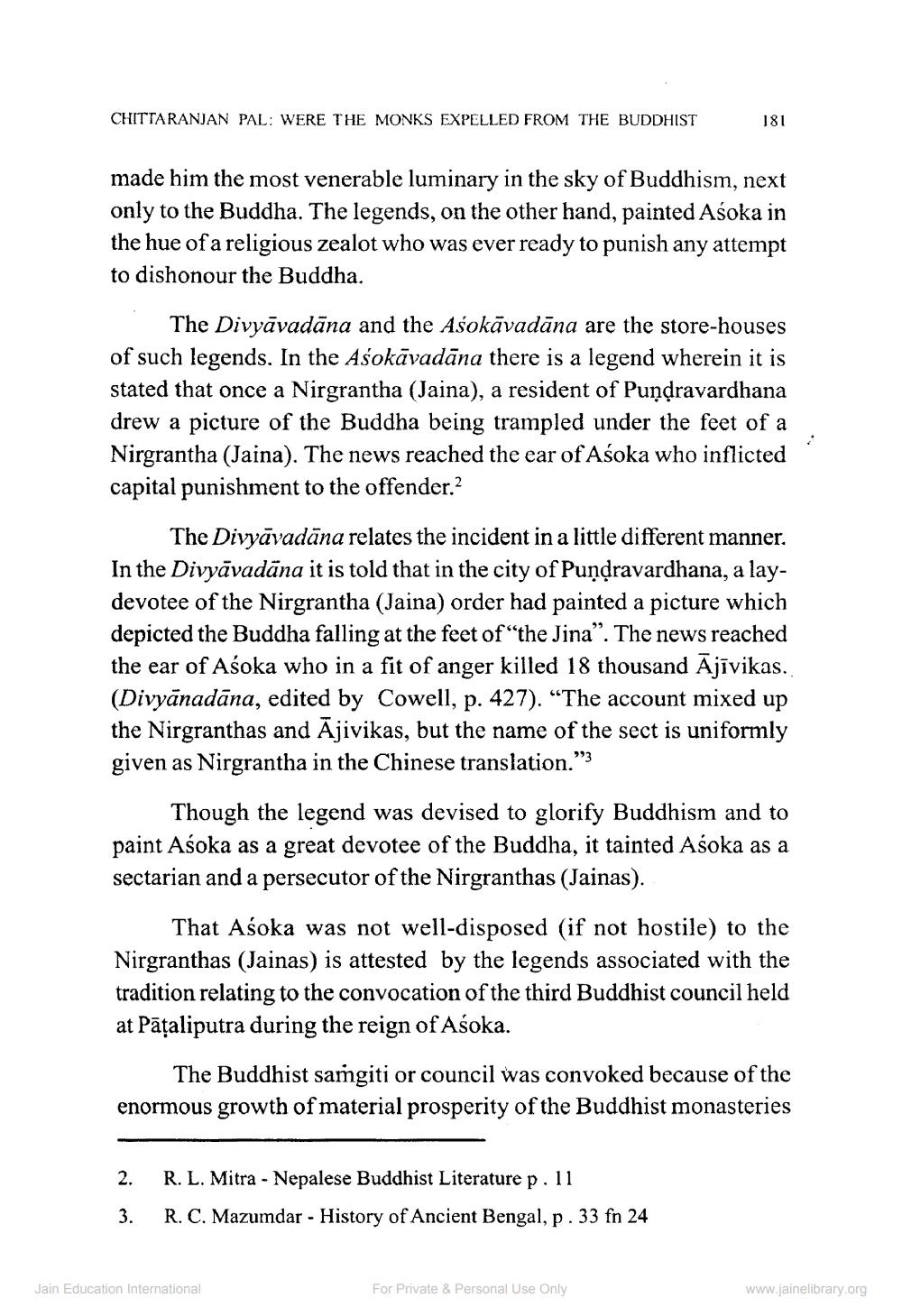________________
CHITTARANJAN PAL: WERE THE MONKS EXPELLED FROM THE BUDDHIST
181
made him the most venerable luminary in the sky of Buddhism, next only to the Buddha. The legends, on the other hand, painted Asoka in the hue of a religious zealot who was ever ready to punish any attempt to dishonour the Buddha.
The Divyāvadāna and the Ašokāvadāna are the store houses of such legends. In the Aśokāvadāna there is a legend wherein it is stated that once a Nirgrantha (Jaina), a resident of Pundravardhana drew a picture of the Buddha being trampled under the feet of a Nirgrantha (Jaina). The news reached the ear of Asoka who inflicted capital punishment to the offender.2
The Divyāvadāna relates the incident in a little different manner. In the Divyāvadāna it is told that in the city of Pundravardhana, a laydevotee of the Nirgrantha (Jaina) order had painted a picture which depicted the Buddha falling at the feet of the Jina”. The news reached the ear of Asoka who in a fit of anger killed 18 thousand Ajīvikas. (Divyānadāna, edited by Cowell, p. 427). “The account mixed up the Nirgranthas and Ajivikas, but the name of the sect is uniformly given as Nirgrantha in the Chinese translation."
Though the legend was devised to glorify Buddhism and to paint Asoka as a great devotee of the Buddha, it tainted Aśoka as a sectarian and a persecutor of the Nirgranthas (Jainas).
That Asoka was not well-disposed (if not hostile) to the Nirgranthas (Jainas) is attested by the legends associated with the tradition relating to the convocation of the third Buddhist council held at Pāțaliputra during the reign of Asoka.
The Buddhist samgiti or council was convoked because of the enormous growth of material prosperity of the Buddhist monasteries
2. 3.
R. L. Mitra - Nepalese Buddhist Literature p. 11 R. C. Mazumdar - History of Ancient Bengal, p.33 fn 24
Jain Education International
For Private & Personal Use Only
www.jainelibrary.org




